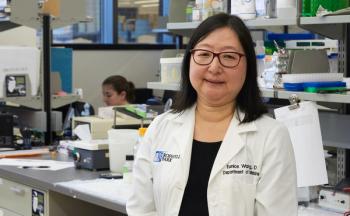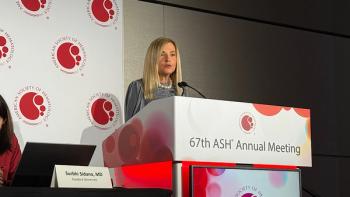
What Are the Factors That Motivate Patients With COPD to Be Physically Active?
A recent study found that patients with chronic lung conditions such as chronic obstructive pulmonary disease are more likely to be physically active when they have regular contact with healthcare professionals, support from peers, and access to organized exercise sessions.
Patients with
The study aimed to understand the factors that both facilitate and block continued PA following the completion of pulmonary rehabilitation (PR) among those with COPD in order to inform future practice and policies for support of long-term adherence to health-enhancing behavior.
“Pulmonary rehabilitation (PR) is defined as “a comprehensive intervention based on a thorough patient assessment followed by patient-tailored therapies that include, but are not limited to, exercise training, education, and behaviour change, designed to improve the physical and psychological condition of people with chronic respiratory disease and to promote the long-term adherence to health-enhancing behavior.” The key benefits of PR include clinically important improvements in dyspnoea, physical capacity, and quality of life,” explained the authors.
The review consisted of 14 studies—12 qualitative studies and 2 mixed-method design studies. Each study had collected data using either semi-structured interviews, open-ended interviews, or focus groups.
In total, 167 individuals were diagnosed with COPD across all of the studies and each person had previously completed PR. The duration of the PR among individuals ranged from 4 to 12 weeks and they attended either inpatient and outpatient PR venues or the setting was not reported. Also, data was collected either at the individuals’ home, the rehabilitation center, or a combination of both.
The assessment of the data revealed that regular contact with healthcare professionals, including feedback about their progress and achievements, is important and necessary in order to motivate people with COPD to be physically active following PR. Additionally, the researchers found that interactions with peers can provide a sense of solidarity and support after rehabilitation, while access to regular organized exercise sessions help individuals establish a routine.
"People living with COPD often tell us that they have difficulty in maintaining a physically active lifestyle,” Hayley Robinson, the leader of the study, said
The researchers hope that the results will help doctors provide better long-term support for people with COPD.
Reference
Robinson H, Williams V, Curtis F, Bridle C, Jones AW. Facilitators and barriers to physical activity following pulmonary rehabilitation in COPD: a systematic review of qualitative studies. [published online June 4, 2018]. NPJ Prim Care Respir Med. doi: 10.1038/s41533-018-0085-7
Newsletter
Stay ahead of policy, cost, and value—subscribe to AJMC for expert insights at the intersection of clinical care and health economics.









































